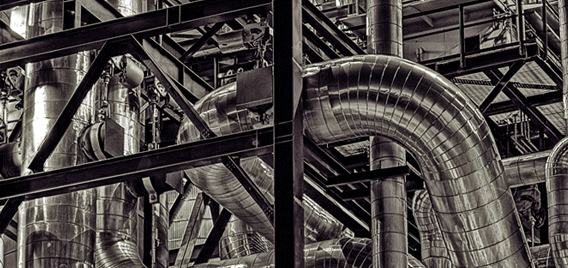Chemical and Process Engineering Resources

An Example
The fluid being pumped is 94% Sulfuric Acid through a 3", Schedule 40, Carbon Steel pipe:
| Mass Flow Rate, lb/hr | 63,143 |
| Volumetric Flow Rate, gpm | 70 |
| Density, lb/ft3 | 112.47 |
| S.G. | 1.802 |
| Viscosity, cp | 10 |
| Temperature, oF | 127 |
| Pipe ID, in | 3.068 |
| Velocity, ft/s | 3.04 |
| Reynold's No | 12,998 |
| Darcy Friction Factor, (f) Pipe | 0.02985 |
| Pipe Line ?P/100 ft | 1.308 |
| Friction Factor at Full Turbulence (ft) | 0.018 |
| Straight Pipe, ft | 31.5 |
Â
| Fittings | Leq/D1 | Leq2, 3 | K1, 2 = | Quantity | Total Leq | Total K |
| 90o Long Radius Elbow | 20 | 5.1 | 0.36 | 2 | 10.23 | 0.72 |
| Branch Tee | 60 | 15.3 | 1.08 | 1 | 15.34 | 1.08 |
| Swing Check Valve | 50 | 12.8 | 0.90 | 1 | 12.78 | 0.90 |
| Plug Valve | 18 | 4.6 | 0.324 | 1 | 4.60 | 0.324 |
| 3" x 1" Reducer4 | None5 | 822.685 | 57.92 | 1 | 822.68 | 57.92 |
| Total | Â | Â | Â | Â | 865.63 | 60.94 |
Notes:
- K values and Leq/D are obtained from Reference 1.
- K values and Leq are given in terms of the larger sized pipe.
- Leq is calculated using Equation 5 above.
- The reducer is really an expansion; the pump discharge nozzle is 1" (Schedule 80) but the connecting pipe is 3". In piping terms, there are no expanders, just reducers. It is standard to specify the reducer with the larger size shown first. The K value for the expansion is calculated as a gradual enlargement with a 30o angle.
- There is no L/D associated with an expansion or contraction. The equivalent length must be back calculated from the K value using Equation 5 above.
| Â | Typical Equivalent Length Method | K Value Method |
| Straight Pipe ?P, psi | Not Applicable | 0.412 |
| Total Pipe Equivalent Length ?P, psi | 11.734 | Not Applicable |
| Valves and Fittings ?P, psi | Not Applicable | 6.828 |
| Total Pipe ?P, psi | 11.734 | 7.240 |
The line pressure drop is greater by about 4.5 psi (about 62%) using the typical equivalent length method (adding straight pipe length to the equivalent length of the fittings and valves and using the pipe line fiction factor in Equation 1).
One can argue that if the fluid is water or a hydrocarbon, the pipeline friction factor would be closer to the friction factor at full turbulence and the error would not be so great, if at all significant; and they would be correct. However hydraulic calculations, like all calculations, should be done in a correct and consistent manner. If the engineer gets into the habit of performing hydraulic calculations using fundamentally incorrect equations, he takes the risk of falling into the trap when confronted by a pumping situation as shown above.
Another point to consider is how the engineer treats a reducer when using the typical equivalent length method. As we saw above, the equivalent length of the reducer had to be back-calculated using equation 5. To do this, we had to use ft and K.
Why not use these for the rest of the fittings and apply the calculation correctly in the first place?

 FB
FB



3 Comments
yeal,thank you very much,i got a lot from this topic.
I'm a bit confused by the preferred equations to be used. The only equation that produces the 11.73 psi dP for the system described is Equation 2, yet Equations 6 & 7 seem to be preferred.